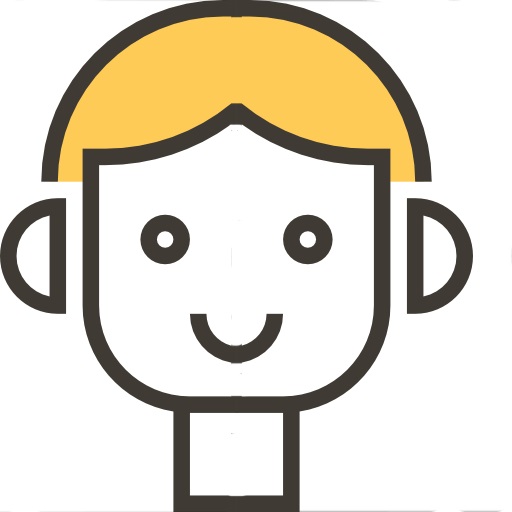United States

Automation Impact
Low

Salary Level
Above Average| Title | Job Zone Four: Considerable Preparation Needed |
|---|---|
| Experience | A considerable amount of work-related skill, knowledge, or experience is needed for these occupations. For example, an accountant must complete four years of college and work for several years in accounting to be considered qualified. |
| Education | Most of these occupations require a four-year bachelor's degree, but some do not. |
| Job Training | Employees in these occupations usually need several years of work-related experience, on-the-job training, and/or vocational training. |
| Examples | Many of these occupations involve coordinating, supervising, managing, or training others. Examples include accountants, sales managers, database administrators, teachers, chemists, environmental engineers, criminal investigators, and special agents. |
| SVP Range | (7.0 to 8.0) |
- Majority (51.89) percent of respondents had : Bachelor's Degree
- Some (25.27) percent of respondents had :Associate's Degree (or other 2-year degree)
- Some (11.49) percent of respondents had :Some College Courses
Interest Code : AER
- Artistic-Artistic occupations frequently involve working with forms, designs and patterns. They often require self-expression and the work can be done without following a clear set of rules.
- Enterprising-Enterprising occupations frequently involve starting up and carrying out projects. These occupations can involve leading people and making many decisions. Sometimes they require risk taking and often deal with business.
- Realistic-Realistic occupations frequently involve work activities that include practical, hands-on problems and solutions. They often deal with plants, animals, and real-world materials like wood, tools, and machinery. Many of the occupations require working outside, and do not involve a lot of paperwork or working closely with others.
- Oral Comprehension-The ability to listen to and understand information and ideas presented through spoken words and sentences.
- Near Vision-The ability to see details at close range (within a few feet of the observer).
- Oral Expression-The ability to communicate information and ideas in speaking so others will understand.
- Originality-The ability to come up with unusual or clever ideas about a given topic or situation, or to develop creative ways to solve a problem.
- Deductive Reasoning-The ability to apply general rules to specific problems to produce answers that make sense.
- Speech Recognition-The ability to identify and understand the speech of another person.
- Innovation-Job requires creativity and alternative thinking to develop new ideas for and answers to work-related problems.
- Attention to Detail-Job requires being careful about detail and thorough in completing work tasks.
- Analytical Thinking-Job requires analyzing information and using logic to address work-related issues and problems.
- Persistence-Job requires persistence in the face of obstacles.
- Independence-Job requires developing one's own ways of doing things, guiding oneself with little or no supervision, and depending on oneself to get things done.
- Dependability-Job requires being reliable, responsible, and dependable, and fulfilling obligations.
Top 3 Values
- Achievement-Occupations that satisfy this work value are results oriented and allow employees to use their strongest abilities, giving them a feeling of accomplishment. Corresponding needs are Ability Utilization and Achievement.
- Relationships-Occupations that satisfy this work value allow employees to provide service to others and work with co-workers in a friendly non-competitive environment. Corresponding needs are Co-workers, Moral Values and Social Service.
- Working Conditions-Occupations that satisfy this work value offer job security and good working conditions. Corresponding needs are Activity, Compensation, Independence, Security, Variety and Working Conditions.
- Active Listening-Giving full attention to what other people are saying, taking time to understand the points being made, asking questions as appropriate, and not interrupting at inappropriate times.
- Critical Thinking-Using logic and reasoning to identify the strengths and weaknesses of alternative solutions, conclusions or approaches to problems.
- Reading Comprehension-Understanding written sentences and paragraphs in work related documents.
- Speaking-Talking to others to convey information effectively.
- Complex Problem Solving-Identifying complex problems and reviewing related information to develop and evaluate options and implement solutions.
- Operations Analysis-Analyzing needs and product requirements to create a design.
- Design-Knowledge of design techniques, tools, and principles involved in production of precision technical plans, blueprints, drawings, and models.
- Engineering and Technology-Knowledge of the practical application of engineering science and technology. This includes applying principles, techniques, procedures, and equipment to the design and production of various goods and services.
- Production and Processing-Knowledge of raw materials, production processes, quality control, costs, and other techniques for maximizing the effective manufacture and distribution of goods.
- Mechanical-Knowledge of machines and tools, including their designs, uses, repair, and maintenance.
- Computers and Electronics-Knowledge of circuit boards, processors, chips, electronic equipment, and computer hardware and software, including applications and programming.
- Mathematics-Knowledge of arithmetic, algebra, geometry, calculus, statistics, and their applications.
- Prepare sketches of ideas, detailed drawings, illustrations, artwork, or blueprints, using drafting instruments, paints and brushes, or computer-aided design equipment.
- Confer with engineering, marketing, production, or sales departments, or with customers, to establish and evaluate design concepts for manufactured products.
- Modify and refine designs, using working models, to conform with customer specifications, production limitations, or changes in design trends.
- Direct and coordinate the fabrication of models or samples and the drafting of working drawings and specification sheets from sketches.
- Evaluate feasibility of design ideas, based on factors such as appearance, safety, function, serviceability, budget, production costs/methods, and market characteristics.
- Present designs and reports to customers or design committees for approval and discuss need for modification.
- Investigate product characteristics such as the product's safety and handling qualities, its market appeal, how efficiently it can be produced, and ways of distributing, using and maintaining it.
- Develop manufacturing procedures and monitor the manufacture of their designs in a factory to improve operations and product quality.
- Research production specifications, costs, production materials and manufacturing methods and provide cost estimates and itemized production requirements.
- Participate in new product planning or market research, including studying the potential need for new products.
- Drafting, Laying Out, and Specifying Technical Devices, Parts, and Equipment-Providing documentation, detailed instructions, drawings, or specifications to tell others about how devices, parts, equipment, or structures are to be fabricated, constructed, assembled, modified, maintained, or used.
- Thinking Creatively-Developing, designing, or creating new applications, ideas, relationships, systems, or products, including artistic contributions.
- Getting Information-Observing, receiving, and otherwise obtaining information from all relevant sources.
- Interacting With Computers-Using computers and computer systems (including hardware and software) to program, write software, set up functions, enter data, or process information.
- Making Decisions and Solving Problems-Analyzing information and evaluating results to choose the best solution and solve problems.
- Communicating with Supervisors, Peers, or Subordinates-Providing information to supervisors, co-workers, and subordinates by telephone, in written form, e-mail, or in person.
- Electronic Mail-Mostly you use electronic mail in this job
- Face-to-Face Discussions-Mostly you have to have face-to-face discussions with individuals or teams in this job?
- Telephone-Mostly you have telephone conversations in this job
- Indoors, Environmentally Controlled-Mostly this job require working indoors in environmentally controlled conditions
- Contact With Others-This job require the worker to be in contact with others (face-to-face, by telephone, or otherwise) in order to perform it?
- Work With Work Group or Team-Important to work with others in a group or team in this job
- Importance of Being Exact or Accurate-Required to be very exact or highly accurate in performing this job
- Freedom to Make Decisions-The job offers decision making freedom without supervision
- Computer aided manufacturing CAM software e.g. 1CadCam Unigraphics
- Document management software e.g. Adobe Systems Adobe Acrobat
- Video creation and editing software e.g. Adobe Systems Adobe AfterEffects
- Graphics or photo imaging software e.g. Adobe Systems Adobe Creative Cloud
- Desktop publishing software e.g. Adobe Systems Adobe InDesign
- Graphics or photo imaging software e.g. Adobe Systems Adobe Photoshop
- Development environment software e.g. Apache Maven
- Computer aided design CAD software e.g. Ashlar-Vellum Cobalt
- Video creation and editing software e.g. Autodesk 3ds Max
- Computer aided design CAD software e.g. Autodesk AliasStudio
- Digital cameras e.g.Compact digital cameras
- Desktop computers
- Notebook computers e.g.Laptop computers
- Liquid crystal display projector e.g.Liquid crystal display LCD video projectors
- Personal computers
- High capacity removable media drives e.g.Universal serial bus USB flash drives
Sub Family
Industries
Self-Employed (30%)
Manufacturing (29%)
Professional Scientific and Technical Services (18%)
For more details on industries and there classification, refer here
Manufacturing (29%)
Professional Scientific and Technical Services (18%)
For more details on industries and there classification, refer here


